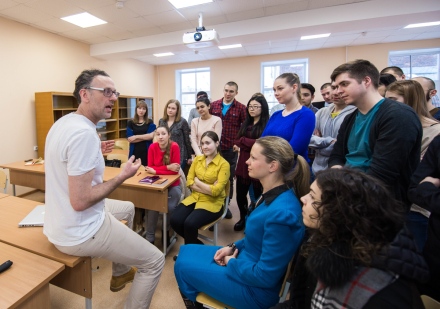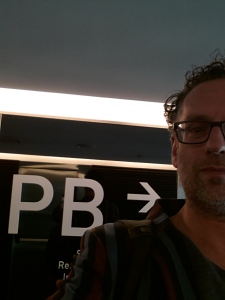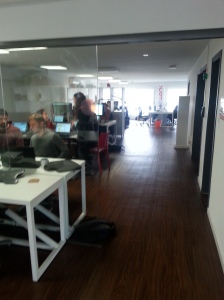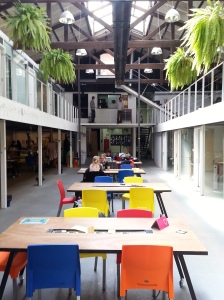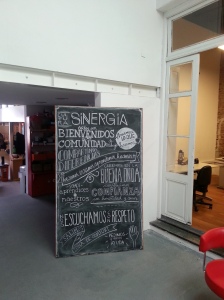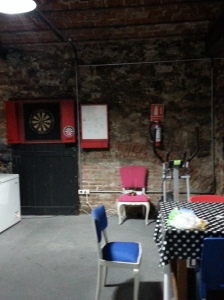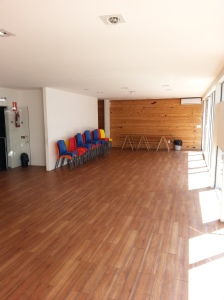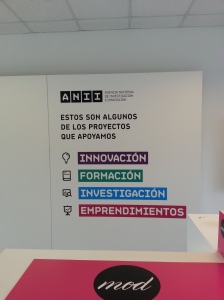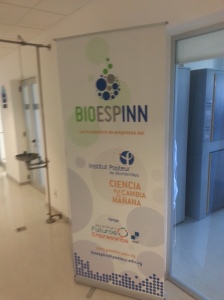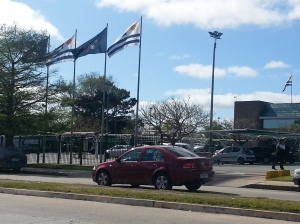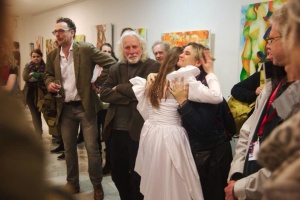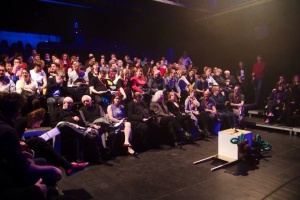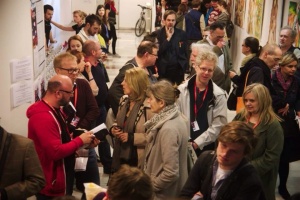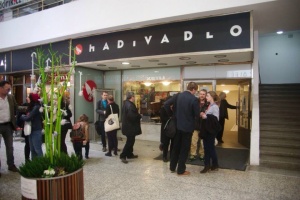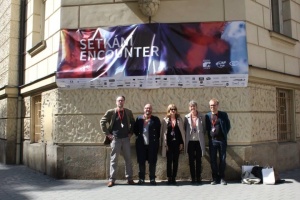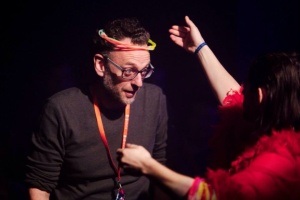In February 2017 I was asked to do a TEDx talk in Cluj Romania. http://www.tedxcluj.com/
My topic was in response to the theme “Going Beyond”. I decided to talk about “Luck’ and how we create our own luck… before the speech I gave an interview for a National Magazine. Here’s the interview and some thoughts about living on The Edge and Being lucky
1.You’ve been asked to define the concept of Going Beyond and you said that `If you’re not living on the edge you’re taking up too much room`. As a theatre director and producer, you’ve worked alongside artists but also with people out of this field. How would you explain to both of these two categories the meaning of “living on the edge”?
The new world is a complex world. As we move into the fourth industrial revolution two basic dynamics appeal to me; the idea of looking forward and looking back.
Looking back; Engels believed that the prime basic condition for all human existence was labour. Most humans feel a need to work, but for many this is not sufficient to give a meaning to life. The political turmoil of today is perhaps a realisation that the current model is not satisfactory.. and yes the model is changing – we are rapidly evolving and a sense of the ‘survival of the fittest’ is coming back into focus.
The middle ‘soft ground’ of work is changing… to grow or indeed to survive, we have to be more ‘on the edge’ looking at dynamics that challenge our traditional thinking. But I am not advocating a simple absorption of new technologies in a Virtual, Artificial world.
Darwin wrote that the survival of mankind depends upon its ability to Improvise and Collaborate, so when I look at my theatrical life as a producer and Director these dynamics are clearly useful as we play out our stories.
The theatre world is a creative world and now so is our labour world. In both creativity is about new boundaries, new ideas and they come from the catalyst of being somewhere dangerous, exciting and risk-oriented, where discoveries are made, where improvisation takes place!
In the theatre and in Work this place is The Edge.
And as a director of plays and as a facilitator of start-ups and corporate change programs, I focus on building strong foundations – the basics – but I am also encouraging people to look back to what worked before and is real, as well as looking forward to what can work next and be the ‘new real’.
So the Edge is where we look both ways – where we fuse old and new, where ideas are both fixed and growth oriented. This is true in the World of Work and in the World of Theatre.
- Ideas, communication and audience are three things that the theater world and the corporate world have in common. Can you explain in more detail this connection and which is the main purpose of the Menagerie Theatre Company?
If you create a performance without an audience it is a rehearsal.
If you create a product or service without customers it is a prototype.
Both of these dynamics are interesting to explore and challenge our thinking. The end game is to create something real and for it to be consumed.
We need to encourage a “Heads-up, Hearts in Culture” where artists and businesses have a creative mind-set yet are still involved in ‘the delivery of the product’ and understand how they can positively influence this.
To survive in the new world, we need to focus on creative and imaginative dynamics, understand the nature of decision making and how to devolve decision making to the grass roots encouraging, positive, creative communication within communities or organizations.
Survival is about how people can work together towards a common goal and strategy whilst retaining individual identity and influence. To do this you need to understand your purpose and your audience, then be able to communicate your ideas.
Aristotle says that to avoid Criticism .. Do nothing, say nothing, be nothing. Menagerie Theatre Company exists to oppose this; to create a critical response to ideas and thereby we set out to say something, do something, be something… and then to get a reaction – either critical or empathetic.
All of our work is collaborative. All of it is new or a fusion of ideas. Our approach is original but definite. We write about what we hear and see, we improvise about what we imagine, we devise, compose and create stories to share. Then we present – somewhere, somehow and of course to someone…
3.Did luck play an important part in your life so far? Can you give us some examples when luck determined your life or your professional path?
There is a subtle but great difference between luck and serendipity .
Of course the routes we take can be determined by us or by others and mostly in combination- our parents, partners, colleagues create our network and environment. But serendipity is a created co-incidence, determined to a great extend by our own conscious or un-conscious decision making .. not other’s; OURS.
So for me going to talk in Cluj at TEDx is not luck, but serendipity. And Serendipity? It’s where good fortune meets the prepared mind
I was part of the decision making process because of where I was on one day, in one moment to make the connection to bring me here – so I made the luck, or I was just lucky?.
Of course the night that someone comes to your show that loves it and wants to work with you might be lucky. Or maybe you made that luck.. by being innovative, hard working and dedicated enough to make that event – to give yourself a chance to be lucky?
So I can’t tell you a moment of luck – just a series of fortunate circumstances.
It’s a bit like a religious mind-set – somehow if you have faith – it will happen, but it can’t be blind faith – rather a deep sense of doing the right thing in the right way at the right time to be lucky.
- In your opinion, which are the trends in theatre at the moment? Are there any forms of expression that need to be recovered or that need to be discovered?
So as we look back and we look forward there is a duality; a fusion of theatre and digital technology but also a recalibration of theatre as a pure form of storytelling – the human experience.
Interestingly there has been a lot of research done recently into the presumption that video games, home computing, live on-line streaming of events etc. would reduce the numbers of people participating in the live theatre events. However the opposite has been true. We are going to the theatre and live music and comedy more than ever before. It is clear we need (crave?) that human experience – that human interaction.
So whilst it is tempting to fuse art and technology in the assumption that it is a good ‘modern ‘thing to do, it is also to be noted that artists are creating a uniquely live human experience which will be perceived and received by each audience member or spectator in their own personal frame. I love the idea of the individual spectator alongside the collective or shared experience that comes only from Live Performance.
There has also been a lot of activity and thought around Immersive Theatre. I have produced some myself. Here the audience goes deeply into the action – not just staring blankly at the stage but participating in and indeed influencing the action – influencing it – changing it !. However this is not new – it has been happening for centuries as spectators shout or invade the stage. From the Greek Chorus made up of local citizens at The Ancient Festivals through to modern Forum or interactive theatre. In a 1923 theatre production Of Meyerhold’s Earth Rampant in Moscow, Trotsky spontaneously came on the stage unannounced during one battle scene – gave a rousing and improvised speech to the ‘actor troops’ then sat back down in his seat! That is participation!!
5.Do you think that there are any limits of creativity in the changing world we live in?
Creativity is a term that covers so much in a positive and negative way – ‘this person is creative, this one not’. For me creativity is about survival, and it comes out of three frames: Necessity ,Opportunity and Ingenuity. We need creative forces to be at play to manage our evolution and now, creativity in the Opportunity and Necessity frames are connected deeply with A.I. and Processing… I truly believe that we mix-up Innovation, Enterprise and Creativity and have no idea what they really are … I am sure I don’t. But I know Creativity is a necessary force and as well as thinking creatively forward we should think creatively back too.
6.Based on your experience, how hard it is to inspire people to think different in a world where information is no longer filtered? Are people always “buying” the story you’re telling?
Fake news… Maybe this is a fake article?
Again Aristotle proposed that to get people to ‘believe’ you need both Evidence and Persuasion. I feel that now it is unbalanced towards Persuasion. The Belief mechanism of evidence is being eroded. That’s’ why stories are important because they are presented as mirrors or reflections of truths not as absolutes. This abdicates some responsibility but also offers some hope for personal decision making. I hope that in my work – in theatre and in business, I am able to show proof as well as inspire thought. There is an old adage that theatre is a lie wrapped up as a truth –one we all accept as a convenat when we go to see or participate in the event. If we know this in advance we are empowered by it. If we don’t know it then we can be tricked or forced into a form of thinking that is dangerous or at least cynical. So let’s create stories together and ‘sell’ them co-operatively, honestly and dynamically to each other. The Virgin Group of Businesses headed by Richard Branson are driven by one key Value – that Everyone is Better Off – so lets do our business, our theatre and live our lives with an E.B.O philosophy?
7.Does the world today need more storytellers? Which storyteller inspired you most when you were younger and which are the most important attributes a storyteller should have?
Stories are about ‘other worlds’ paradigms and metaphors – a fusion of fantasies and realities. I love stories.
So when we go to the pub for a drink and to talk and tell stories and we get to that moment when we can’t remember ‘who that actor was in that old movie?’ or ‘what the number of spectators was at that football match?’ or the color of someone’s hair in that painting?, let’s not stop and Google it and fact check – for now let’s enjoy the half-remembered, sure we will find out soon enough who, what, where and when… but for now let’s enjoy our ignorance, our dreams our half-remembered conversation and our stories. Lets enjoy the opportunity and possibility of stories. Good stories, honest stories. That facts will come for sure.
But for now let’s paint the picture as we see it, as we imagine it and as we want it to be….
